Leigh is attending a Conference in Rotorua today and kindly left me with her car so that I could explore the area during the day.
My first impression of Rotorua was smelly! It is another concentrated area of geothermal activity. Apart from the constant odour, however, it looked a very nice little town, a bit bigger than Taupo.
Having mastered the art of depressing the footbrake before putting it into gear, I was flying past the logger bfts on my way to Wai-o-Tapu Thermal Wonderland about 20 minutes drive from Rotorua. I’d never driven an automatic before but after the initial hiccup all was well and I soon felt confident driving a strange vehicle in a strange country.
I planned to arrive in time to see the Lady Knox Geyser which performed its thing at the same time each day 10.15am. I was a little late for the start but it was still spouting well when I got there.
I bought a ticket to take me round three designated walks, short, medium and long which covered all the various types of puffing crevices, mud pools, coloured lakes, caves, wooded wonderlands, waterfalls and vistas. The sun had come out and it was pleasantly warm so I decided to take my time so as to be sure not to miss anything on the map I was given.
It was actually a very interesting and varied day with some added birdlife as well as some awesome vistas. Sculptured out of volcanic activity and thousands of years in the making, Wai-O-Tapu is considered to be New Zealand’s most colourful and diverse geothermal sightseeing attraction. You are introduced to a uniquely different natural landscape – the key to what you see lies below the surface – one of the most extensive geothermal systems in New Zealand.
Bubble bubble toil and trouble, this mudpool was like boiling porridge and every so often one of the bubbling spots would leap high into the air.
This is known as the Artists’ Pallet, a very good description as there were pools of colour caused by the minerals which move about in the wind.
Now for a bit of history and geology. Maori legend tells how Maui used the jawbone of his ancestor baited with blood from is nose as a fish hook to pull up the north island. New Zealand did literally rise from the sea millions of years ago when it was part of the landmass of the southern hemisphere known as Gondwana.
The earth’s crust is made up of a patchwork of interlocking slabs (plates) which move independently like enormous ice flows. Today NZ straddles the boundary between the Indian, Australian and Pacific plates. Tremendous natural energy is released which results in spectacular geological occurrences including mountain building, earthquakes and volcanic activity. In the last 150 years, earthquakes in Wellington (1855), Murchinson (1929) and Napier (1931) have resulted in marked land changes confiring NZ as “The Shaky Isles”
This pool was actually a very much brighter veridian green than I could capture on camera.
There was an area of forest which looked just like a wonderland with its unusual colours caused by trees, grasses and ferns being coated in the various minerals. It was quite magical.
The view across the coloured swirling pools and waterfalls to the volcano in the distance was the climax of the walk.
This is the best photo I could get of this Pied Stilt before my camera finally stopped working completely. I had hoped to get a much closer sharper shot. There were also some pretty little Fantails dartling about amongst the trees and I took a Flip movie of these which I can’t seem to put on here because it’s too big.
It was about a half hour walk back from this point to the entrance and by this time I was parched and a bit hungry so decided to have a spot of lunch before returning to Rotorua. I returned a little early and Leigh was later finishing her conference so I spent some time by the lake watching the seabirds. This was another thermal area where you had to avoid hotspots.


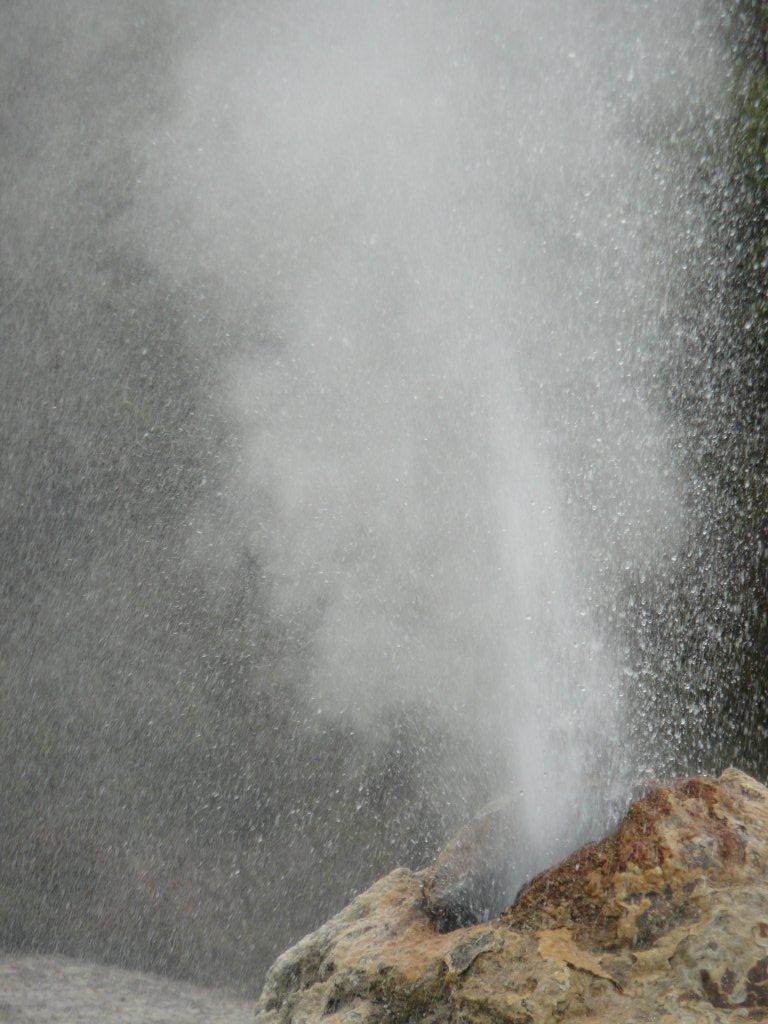
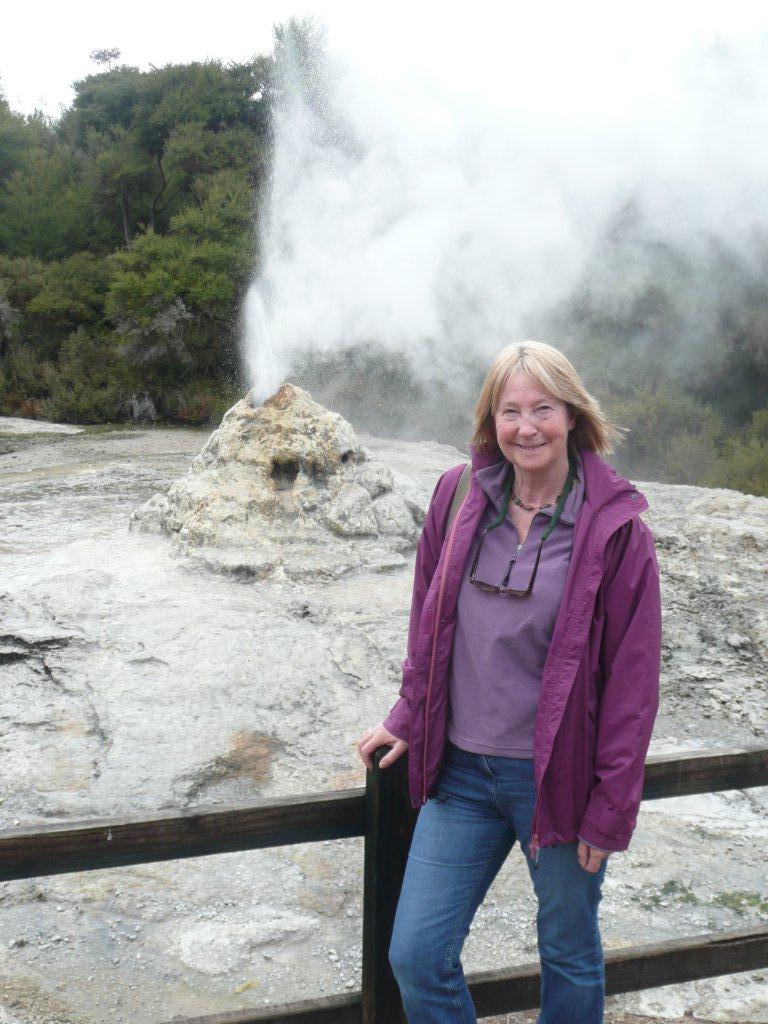
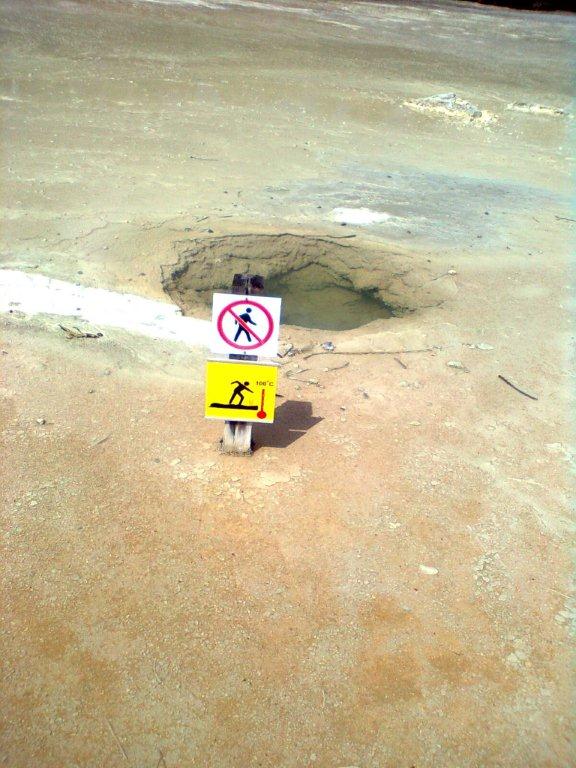
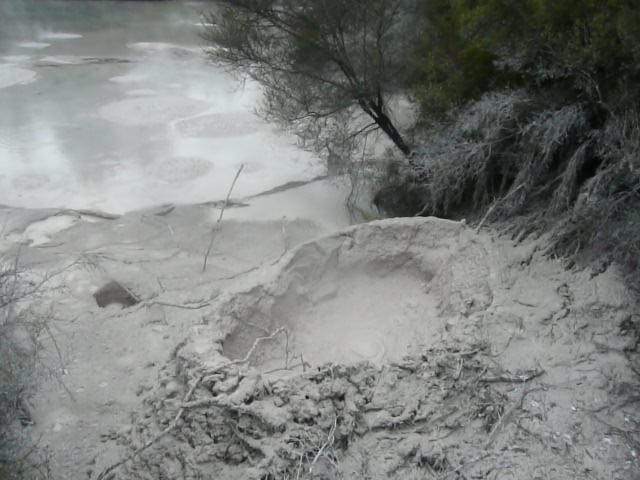
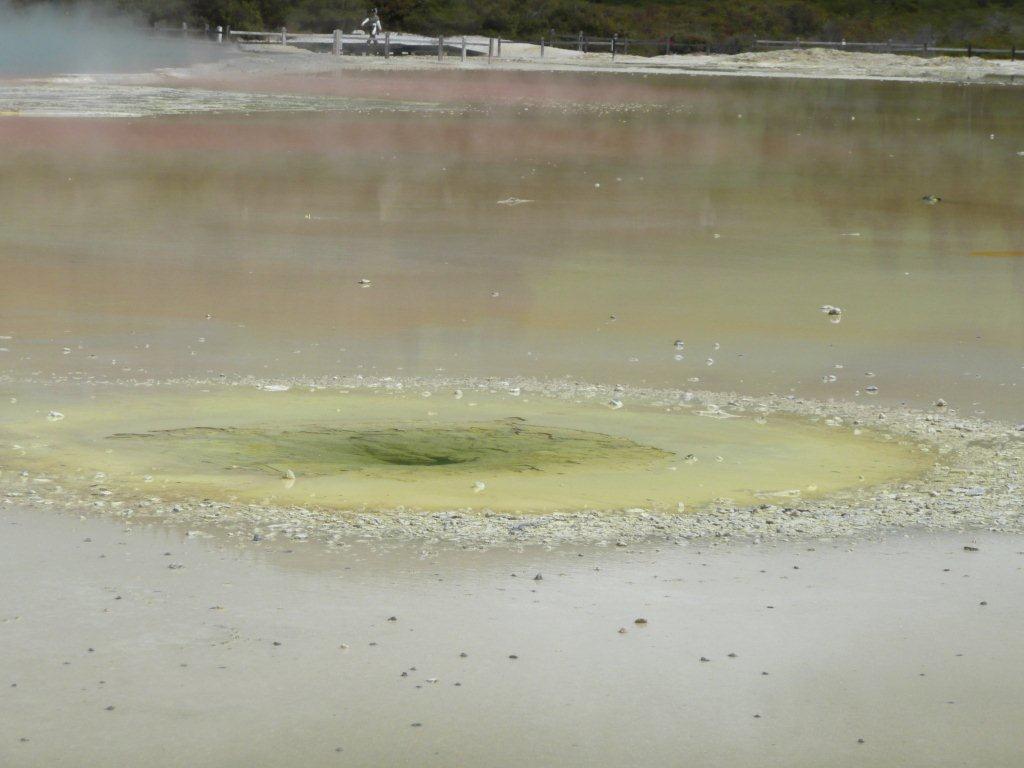
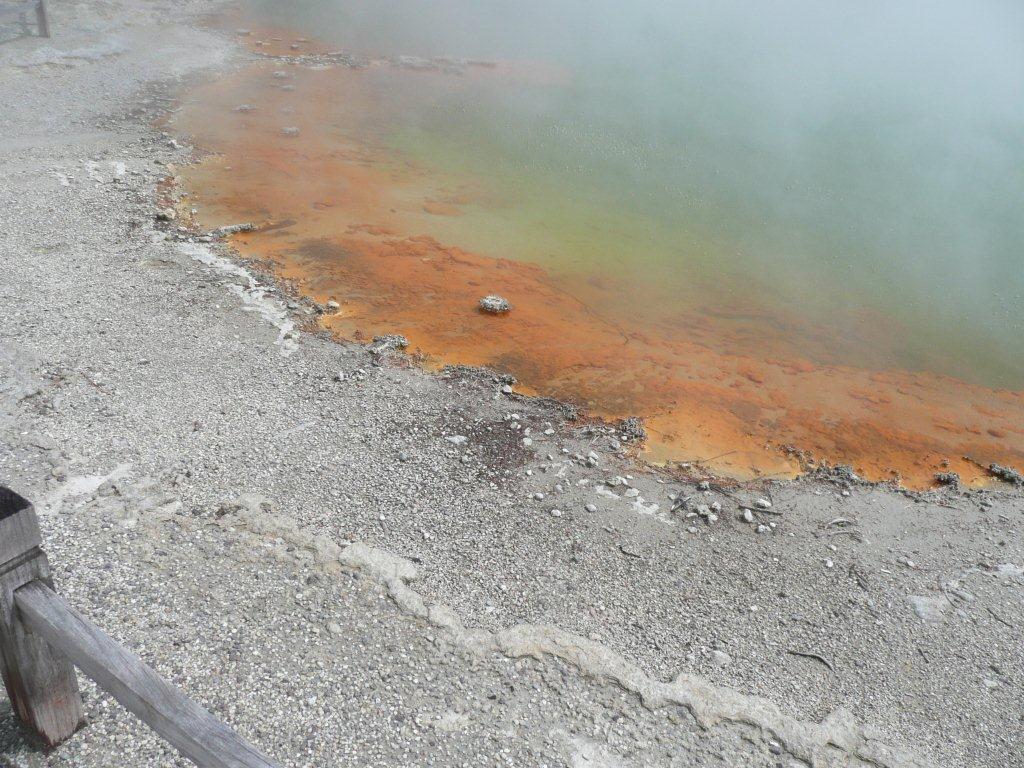
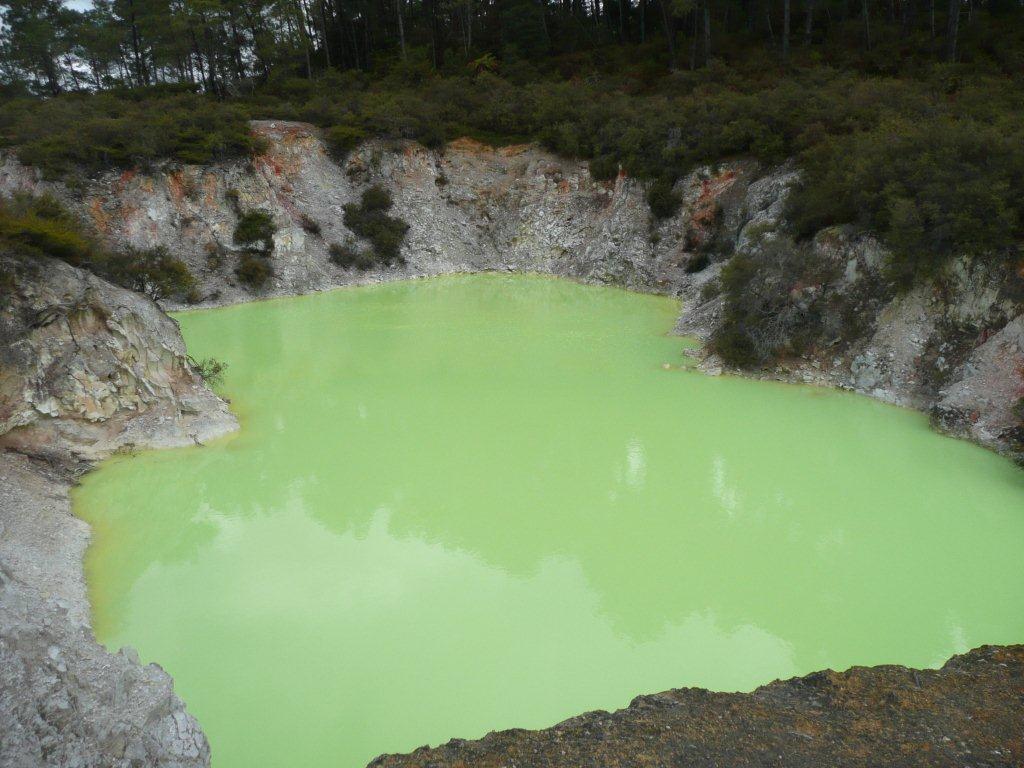
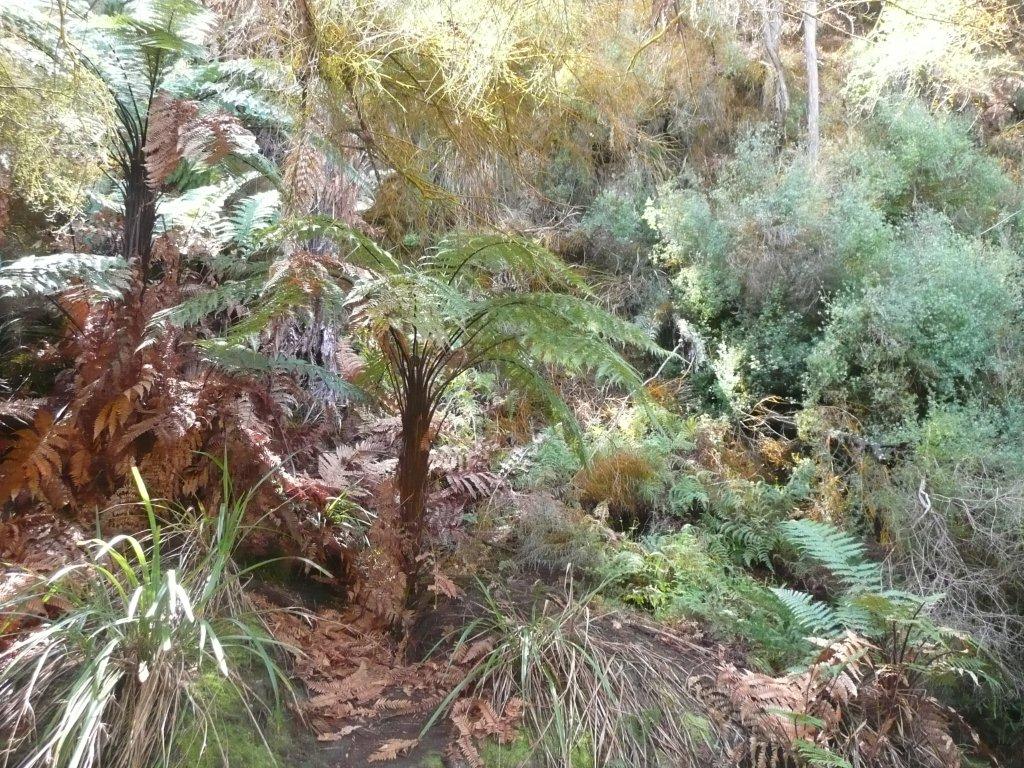

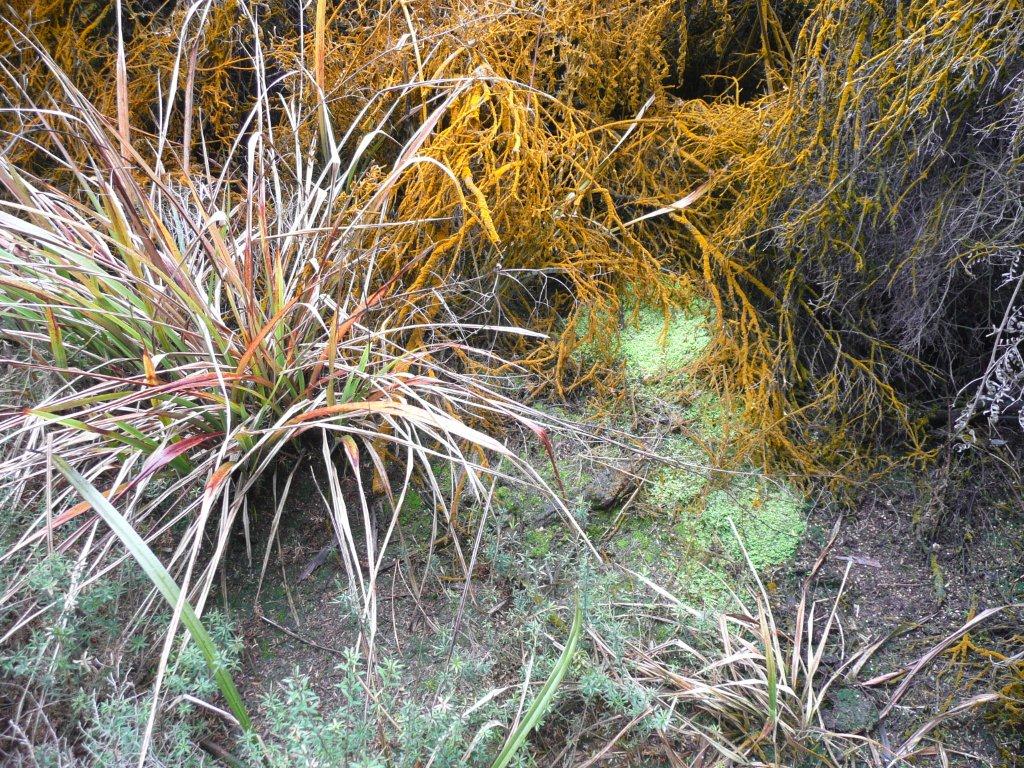

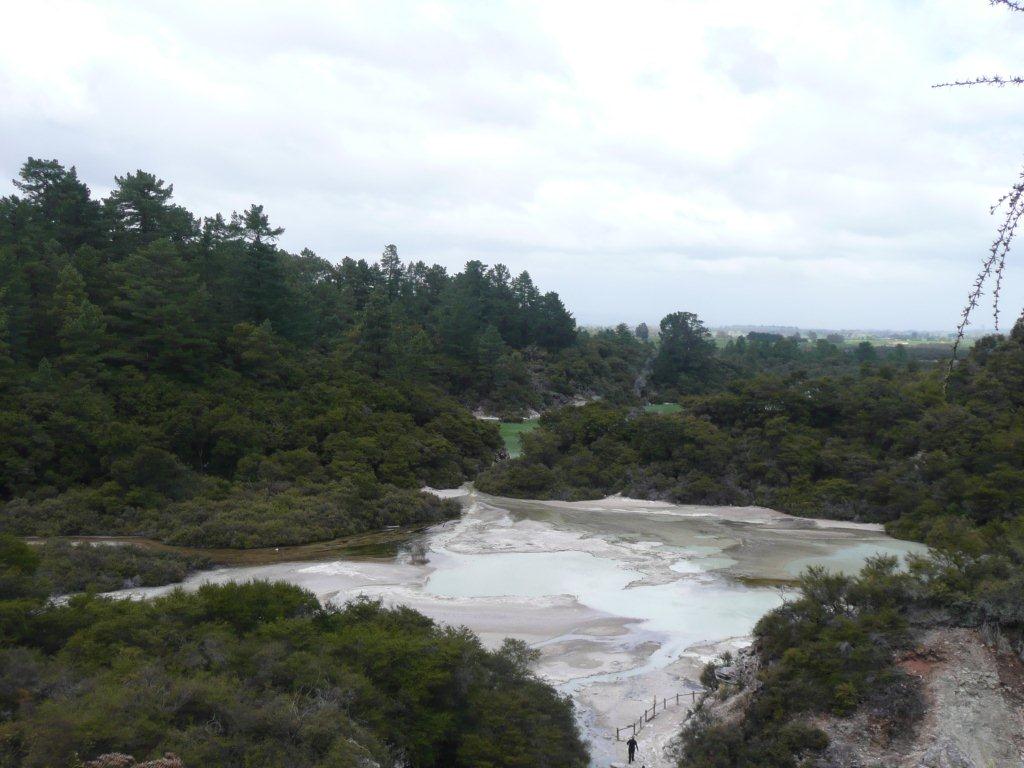
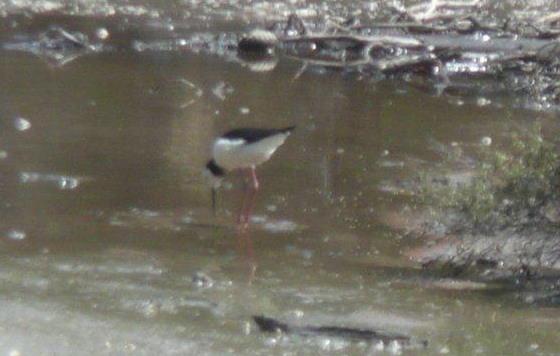
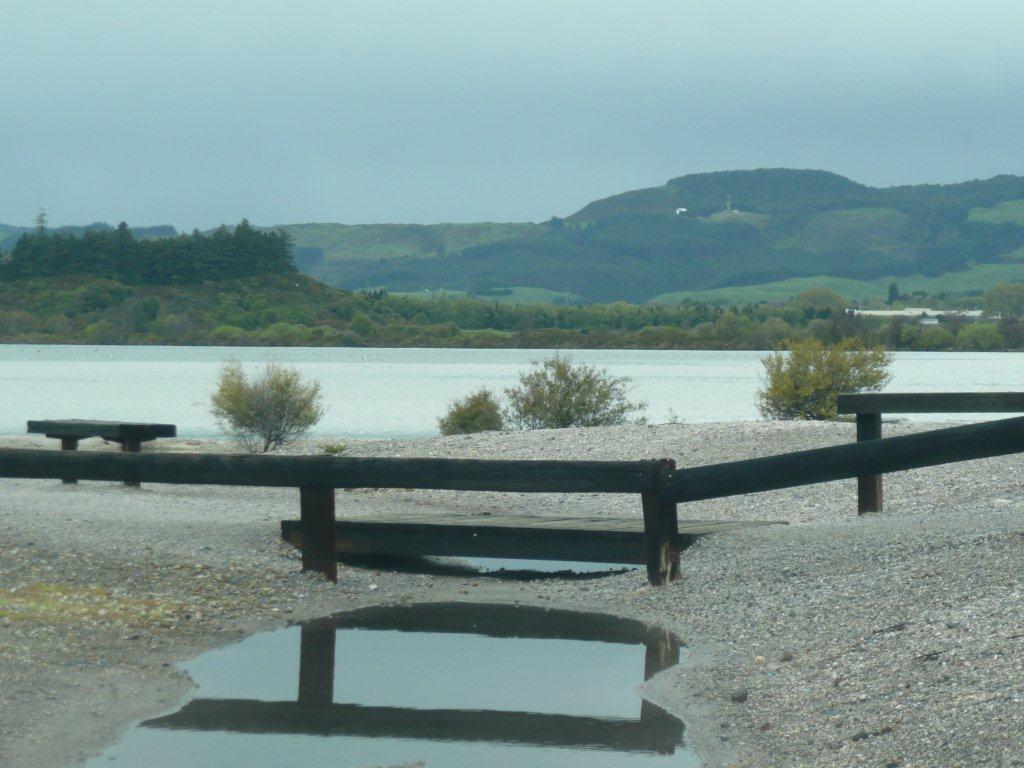
3 Responses to Rotorua